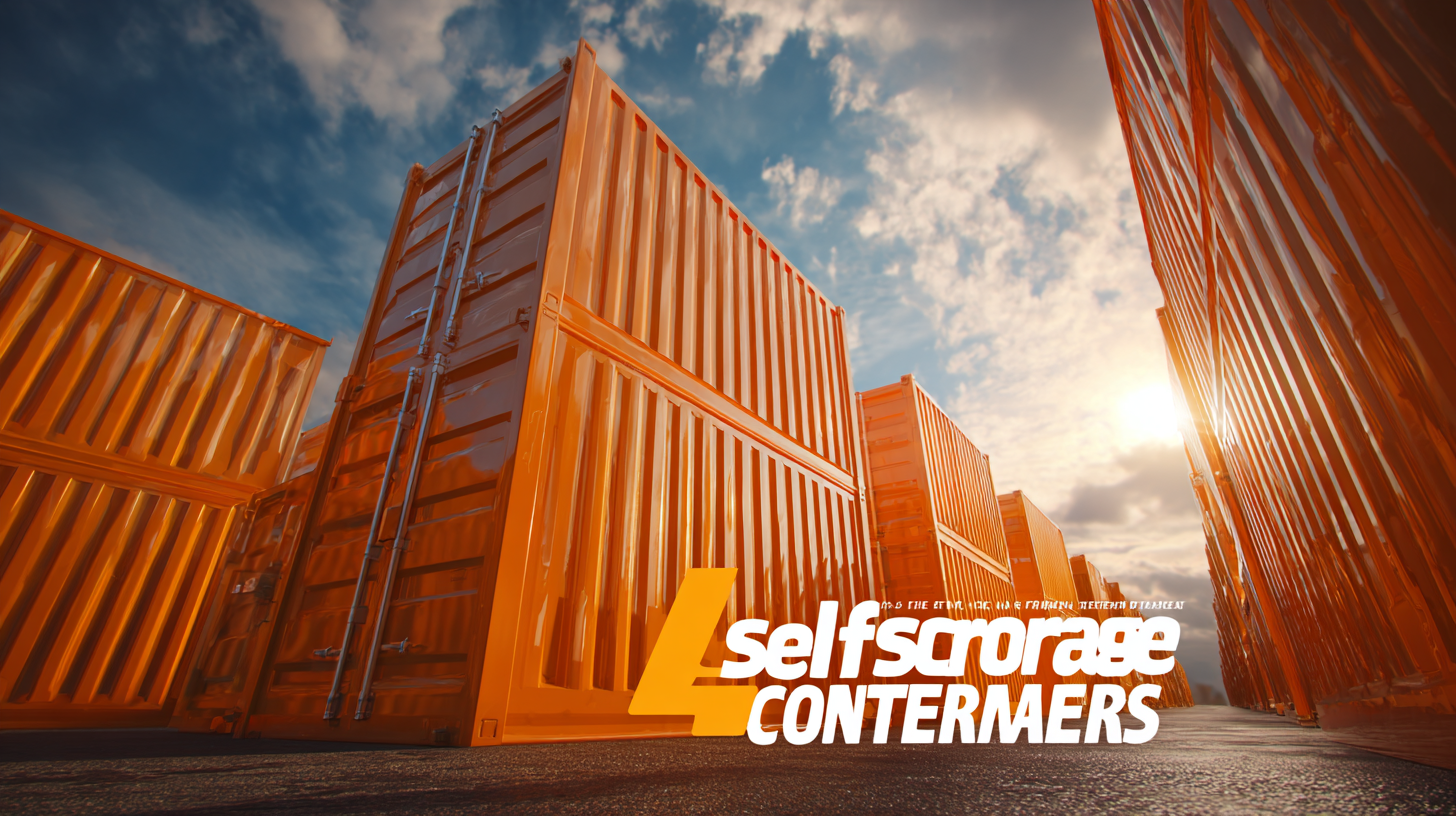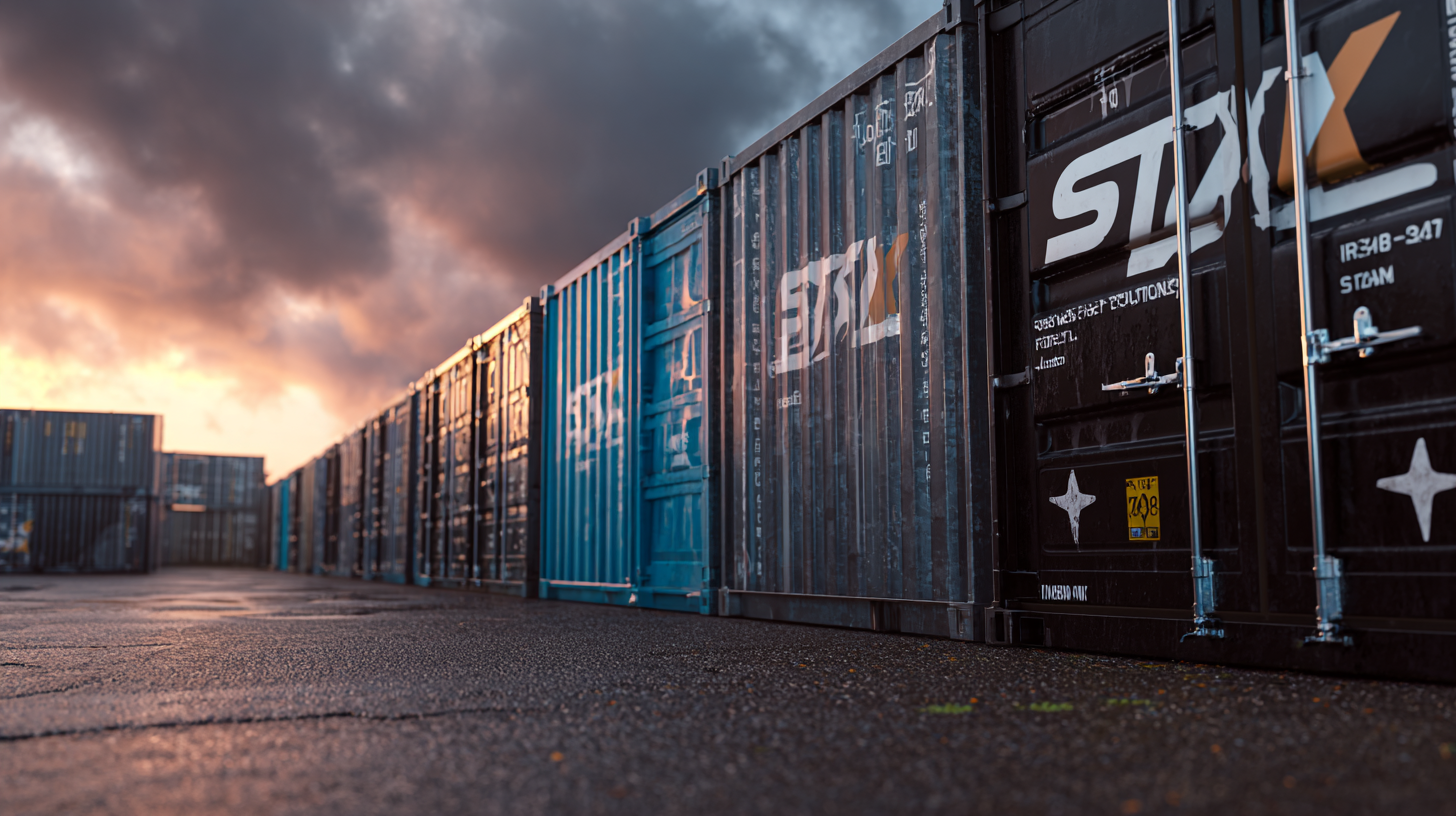As the demand for space continues to grow globally, the self storage containers market is poised for substantial expansion, with projections indicating a compound annual growth rate (CAGR) of 7.5% from 2023 to 2028. This trend is particularly pronounced in densely populated urban areas, where the need for efficient space management solutions is critical. Buyers around the world are increasingly turning to self storage containers not only for personal storage needs but also for commercial applications, such as inventory management and temporary housing solutions. In 2025, the focus will increasingly shift towards sourcing high-quality containers from leading manufacturing hubs, particularly in China, known for its innovation and production capabilities. This blog aims to navigate the emerging trends in the self storage container market, providing insights for global buyers looking to optimize their purchasing strategies in an evolving landscape.

The global demand for self-storage containers is poised for significant growth in 2025, driven by an increasingly mobile lifestyle and the ongoing trend of urbanization. As more individuals and businesses seek flexible solutions to manage their belongings, self-storage containers have emerged as an efficient option for both short-term and long-term storage needs. This rising popularity is particularly evident in urban areas where space is often at a premium, compelling residents to seek creative storage solutions to accommodate their growing inventory of possessions.
In addition to personal use, businesses are also recognizing the advantages of self-storage containers. Companies can utilize these units for various purposes, including inventory management, seasonal storage, and temporary project space. The versatility of storage containers allows businesses to efficiently adapt to fluctuating demands, facilitating easier logistics and streamlined operations. As the market evolves, manufacturers are expected to innovate with enhanced features such as climate control, security mechanisms, and eco-friendly materials, further driving the adoption of self-storage solutions in the coming years.
As we look towards 2025, the self-storage container market is poised for significant innovations that cater to the evolving needs of global buyers. One of the most promising advancements is the integration of smart technology into container designs. These state-of-the-art containers are now being equipped with IoT (Internet of Things) sensors that allow for real-time monitoring of conditions such as temperature, humidity, and security. This feature is particularly beneficial for storing sensitive items, providing owners with peace of mind through continuous updates delivered via smartphone applications.
Additionally, sustainability has emerged as a critical focus in the design of self-storage containers. Manufacturers are increasingly utilizing eco-friendly materials that not only enhance durability but also reduce environmental impact. Features like modular designs offer flexibility, allowing users to expand or resize their storage solution as needed. Moreover, innovations such as solar panels for energy efficiency are beginning to appear, enabling self-sufficient energy use for lighting and security systems within the containers. These advancements not only improve functionality but also appeal to a growing demographic of environmentally conscious consumers.
| Feature / Innovation | Description | Potential Impact | Adoption Rate (Predicted) |
|---|---|---|---|
| Smart Lock Technology | Integration of smart locks that can be controlled via mobile apps, providing enhanced security and convenience. | Increased security and ease of access, appealing to tech-savvy users. | Around 35% |
| Portable Self Storage Solutions | Containers designed for easy transportation, allowing customers to pack and move at their convenience. | Higher customer flexibility and satisfaction, catering to transient lifestyles. | Expected to grow by 40% |
| Eco-Friendly Materials | Construction of storage containers using sustainable and recyclable materials. | Attracts environmentally-conscious consumers and enhances brand image. | Predicted to reach 30% |
| Climate-Controlled Containers | Containers equipped with temperature and humidity controls for sensitive items. | Improves storage options for items like electronics and antiques, increasing demand. | Forecasted to be 25% |
| Modular Storage Systems | Interlocking storage units that allow users to configure their space efficiently. | Encourages maximum space utilization, attracting business clients. | Estimated at 20% |
The global trade landscape is significantly influencing China's self-storage container market, particularly as we approach 2025. As noted, approximately 95% of the world's shipping containers are produced in China, giving it a dominant position in the industry. However, this dominance raises concerns about supply chain vulnerabilities. The ongoing challenges in container logistics, such as the bottleneck in empty container returns, continue to impact maritime shipping efficiency.

Tips for Buyers: When navigating the self-storage container market, it's crucial to investigate the supplier's reliability, especially considering the fluctuating global trade policies that could affect availability. Ensuring that your supplier has robust contingency plans can help mitigate the risks associated with sudden market shifts.
Furthermore, as competition heats up in the shipping industry, with predictions of a decline in global container throughput due to shifting trade dynamics, buyers should remain agile. Evaluating long-term contracts and diversifying suppliers can provide more stability in an unpredictable market. Keeping abreast of international maritime regulations will also be essential to ensure compliance and optimize costs in your self-storage operations.
In the rapidly evolving landscape of the self-storage containers market, ensuring product quality remains paramount for global buyers, particularly in light of Chinese manufacturing practices. According to a report by Research and Markets, the global self-storage market is projected to reach $104.5 billion by 2025, driven by increasing urbanization and the rise of e-commerce. As competition intensifies, manufacturers in China are adopting stringent quality assurance practices to meet international standards and consumer expectations.
Chinese manufacturers are implementing robust quality control measures, including ISO 9001 certification and Six Sigma methodologies, to enhance their production processes. A study by Statista indicates that around 72% of Chinese manufacturers have adopted quality management systems to boost efficiency and minimize defects. Furthermore, collaboration with international partners is becoming more common, enabling Chinese companies to align their practices with global benchmarks. These efforts not only improve product reliability but also build trust with buyers who are increasingly demanding transparency and accountability in the supply chain.

As we look towards 2025, sustainability will play a pivotal role in the self-storage solutions market. With increasing awareness of environmental issues, consumers are prioritizing eco-friendly options. This shift is prompting storage facilities to adopt green practices, such as utilizing renewable energy sources and implementing energy-efficient designs. These measures not only reduce the carbon footprint but also create a more appealing experience for environmentally conscious customers.
Additionally, the materials used in constructing storage containers are evolving to meet sustainability standards. Recycled metal and sustainable wood options are becoming more prevalent, minimizing environmental impact while ensuring durability. Moreover, innovative storage solutions, such as modular containers that can be easily transported and repurposed, are emerging. These trends indicate a committed move towards a more sustainable future in the self-storage industry. By 2025, buyers can expect a range of choices that align with their environmental values, making sustainable self-storage the norm rather than the exception.